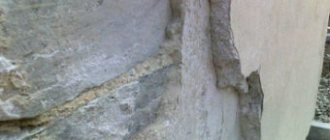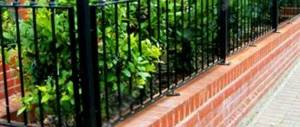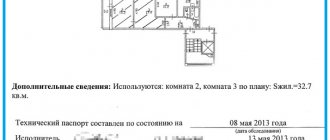Causes of roof leaks
The roofing system must be in perfect condition, only in this case can you be sure of its reliability. Regular roof inspections will help avoid trouble. Even the smallest flaws in your roof can cause big problems later on.
What can cause a roof leak? There are quite a few reasons:
- Poor selection of roofing materials.
- Mistakes by builders in the placement of roof layers.
- Errors in the construction of the sheathing, in the calculation of the pitch of the rafters.
- Lack of ventilation in the ridge part of the roof, improper functioning of vents, weather vanes in the eaves area.
- Technological violations in the arrangement of the roof.
- Improper creation of a water drainage system.
- Use of low-quality construction and fastening materials.
It should be noted that leaks can signal errors in the design and construction of not only the roof, but also the entire building. For example, a roof structure may become skewed if the builders and designers did not take into account the peculiarities of foundation movements.
Deformations in the building structure that occur due to errors in design or construction can cause roof leaks
Leak classification
Depending on the time of occurrence, all leaks can be divided into three types:
- "rainy";
- "snowy";
- insulating.
The first option is often detected during precipitation. During rains or some time after them, a wet spot forms on the ceiling or water actually drips. If the roof has a flat structure, then such a flaw is very easy to find. It is located directly below the leak. When the roof is pitched, it is much more difficult to localize the leak.
The interior of the room is completely damaged due to a roof leak
The second case of leakage is associated with the melting of snow and ice. It is during this period that accumulations of melted snow and ice formations can be seen in the interior of the room. Most often, drain funnels, valleys, gutters, etc. are affected.
Leakage can also result from a wet insulating layer of the roof. This occurs in hot summer weather. Excess condensation forms when there is a large temperature difference between the outside of the building and in front of the insulation. The vapor barrier membrane does not cope with the task of retaining excess moisture, this leads to leakage. Very often such troubles occur due to improper waterproofing.
Repairing a flat roof of an apartment building in one day
In 85% of cases, we complete a turnkey flat roof repair of an apartment building in just one day. We don’t patch locally, but create new protective coatings over the entire area. Spraying PPU and PM is the only technology that allows you to do this without removing the old roofing material laid in many layers. This is not fantasy, but a real option if the roof meets the following requirements:
- the slope of the roof does not have any significant violations of the geometry;
- there is no soaking of mineral or stone wool insulation;
- the existing rolled carpet is tightly adhered to the base, and peeling, swelling and bubbles are local in nature.
Under the specified conditions, Begemot Group of Companies carries out repairs of the soft roof of an apartment building on an area of 250-350 m2 (1 entrance) in one daylight hours using one team. Including preparatory work. We can attract several teams and repair 2-3 entrances in the same period. What are we doing:
- We open and dry the bubbles, remove loose areas of old waterproofing, clean everything, and, if necessary, wash with water under pressure;
- We completely remove the old coating from the vertical sections of the junctions, if necessary, repair the parapets, prime the surface;
- If necessary, we install aerators to remove moisture from the old insulation; we restore the fillet at the junctions, clean the water intake funnels or replace them;
- We spray polyurethane foam with a layer of 10-25 mm to level the surface, spray the main waterproofing - polyurea 2 mm thick, and then a light-protective layer.
- Reinstall parapet covers, etc.
Note. The technology makes it possible to meet energy saving requirements even when repairing the roof of a multi-story building without removing the old covering. We spray 15-20 mm of polyurethane foam as a base, and this layer already replaces 100-150 mm of expanded clay or 25-30 mm of expanded polystyrene. This thin layer provides from 15 to 40% (depending on the climate zone) of the standard thermal resistance of the roof. That is, “additional insulation” is a bonus.
We make sure to calculate the current thermal parameters of the roofing pie. And at the customer’s request, we can bring the thermal resistance to the requirements of SNiP and the Federal Law “On Energy Saving” by spraying a thicker layer. The operation increases the base cost of work by no more than 15-25% . Additional insulation completely eliminates complaints from residents of the upper floors about condensation, cold in winter and heat in summer.
Types of roof repairs
There is regulatory and technical documentation regulating the inspection, determination of the type of leak and subsequent repair of the roof:
- Construction norms and rules SNiP II-26–76.
- GOST standards.
- Technical requirements.
Even the most cursory inspection of such a roof will reveal a large number of defects.
Any roof repair work is preceded by a thorough inspection of the roof, rafter structure, and thermal insulation layer. When problem areas are identified, they are highlighted with chalk or paint. It is worth inspecting the roof both from the outside and from the attic, carefully studying the condition of the roof and identifying damaged areas. It is advisable to carry out the inspection during the day, and determine the location of leaks during rain.
Emergency roof repair
This type of work is carried out in emergency situations. The purpose of the repair is to urgently eliminate the integrity of the roof covering. Severe leaks can cause irreparable damage to the underlying premises, thermal insulation structure and supporting structures.
A quick response to a roof leak will save building residents from serious repairs to the premises
The estimate for the maintenance of the building must contain expense items for this case.
Current roof repairs
Current repairs are carried out twice a year (spring and autumn) and are prescribed in the planned activities of service organizations.
A patch placed in the area of the leak will increase the lifespan of the roof.
The spring-autumn inspection of roofs should record the readiness of the roof for uninterrupted operation and determine the types of repair work if necessary.
Current repairs are carried out to ensure that the building serves for a long time and with high quality. When planning ongoing repairs, the following must be taken into account:
- climatic conditions of building operation;
- design features;
- mode of use of the building;
- technical condition of the roof.
The organization that operates the building pays for ongoing roof repair work.
Major roof repairs
Carrying out major repairs involves implementing a whole range of measures aimed at eliminating any roof faults. They remove worn-out structures and replace them with new, more modern ones in terms of efficiency and durability. All this is done if the roof and rafters can no longer be used safely. The wear of the load-bearing elements of the roof must be at least fifty percent.
If the roof is very worn, it is necessary to replace the entire roof covering.
Problems that are solved during major roof repairs:
- improving roof performance;
- extending the service life of the building;
- increasing energy efficiency;
- change in appearance.
The time boundaries for the start and end of repair work are determined in accordance with regulatory documents adopted by industry management bodies.
Estimated and contract prices are taken into account when determining the cost of major repairs.
Procedure for applying for roof repair in an apartment building
Even if you are well versed in roofing, it is still not worth repairing the roof yourself. This is the management company's area of responsibility. Residents for such liberties may be held accountable (criminal or administrative) for illegal entry onto the roof, carrying out unauthorized work that is dangerous for other inhabitants of the building.
Residents are not allowed to repair the roof of an apartment building themselves; this should be done by utility services
What to do if you notice a roof leak in your own apartment? The detailed instructions are as follows:
- Record the fact of the leak on a photo or video camera so that, if necessary, you have evidence of what happened.
- Contact the emergency service of the management company servicing your home. Phone numbers are usually indicated on information boards in the entrances or on the institution’s website.
- In a conversation with an emergency service specialist, clearly describe the problem, give the exact address and find out how long to wait for the utility workers, who will document the fact of the leak and take measures to eliminate it.
Speak politely, without ingratiating yourself, but also without threatening utility workers.
The emergency service is obliged to respond to the received request within 24 hours. If no one comes to the call, you need to call again. No response again? Then you need to act differently. We will tell you exactly how below.
The utility emergency service operates 24 hours a day, 7 days a week
If utility workers arrive when called, they are required to document the incident. To do this, a roof leak report is drawn up (we will provide the form and content a little later). Next, a defective statement is drawn up. It, like the act, is written only by employees of the management company. Residents of the apartment building act as witnesses.
Typically, affected residents are not given certificates and statements; they remain with the utility companies; however, citizens have the right to request copies of documents; refusal is not allowed.
Video: what to do if no one responds to a leak report
New roof repair technologies
Modern innovative technologies make it possible to repair roofs using the latest techniques. Liquid roof spraying is an effective technique that has a number of significant advantages:
- Carrying out repairs without removing the old roofing.
- Maximum protection against the adverse effects of sunlight.
- High adhesion (similar to welding).
- Highest level of elasticity.
- Short hardening time for the material.
- Low flammability.
- Environmental Safety.
- Durability (warranty period - 20 years).
- Resistance to microorganisms and rodents.
- Immunity to corrosion and aggressive environments.
Modern technologies facilitate and speed up the process of roof installation and repair
There are three types of liquid spray most commonly used in roof repairs.
Table: types of liquid spraying
| Waterproofing basis | Features and Applications |
| Rigid foam (PPU, foam) | It is used on roofs of various designs (circle, semicircle, made of corrugated materials), taking into account the angle of inclination is optional. Well isolates any manifestations of moisture, protects the roofing from mechanical damage. |
| Two-component rubber | High adhesive ability, suitable for roofs with complex relief structures, does not leave seams. Low level of flammability. Does not have an unpleasant odor. |
| Polymer mastic of bituminous nature | An ideal monolithic coating for bases made of different materials and configurations. Does not require additional preparation (heating). Quite a cheap method. Rich color range of materials used. |
Application of liquid spraying is carried out in several layers, their number depends on the selected type of soft roof, as well as on the main tasks of construction and on the loads on the roof.
Video: spraying liquid rubber on the roof
Repair of different types of roofing
Roof renovation work may vary slightly depending on the type of material used to waterproof the roof.
Roll coating
One of the most common causes of roll roofing wear is moisture seeping under the roofing. Under the influence of high temperatures, water heats up and turns into a vapor state, which leads to the formation of swollen and cracked areas in the rolled roofing. A lot of such problem areas can form, and this causes extensive rupture of the rolled roofing.
The defect can be eliminated using patches. The effectiveness of their use largely depends on the quality of the work performed.
Roll roof repair process:
- Cleaning from debris and powder. This must be done especially carefully at the site of damage.
- Opening the area of damaged coating. In this case, it is necessary to lift all layers of the roof and remove the old mastic.
Opening and cleaning the damaged area must be carried out with special care - Inspection and detection of traces of leakage.
- Drying the insulating layer.
- Cementing detected holes, priming the repaired area.
- Applying a patch with the same number of layers that were in the worn coating.
The patch is installed on the damaged area, pre-treated with bitumen mastic - Treating the area with the patch with molten bitumen mastic.
The patch should be placed 10–15 cm under the edges of the old “carpet”. Similar actions are repeated when bubbles form on the rolled roofing. Having discovered a swelling, it is cut crosswise with a sharp knife. Then they act according to the scheme described above.
Mastic for roofing felt repair is prepared from hot molten bitumen with filling (small sawdust, chalk chips, flour, asbestos). From eight kilograms of bitumen and one and a half kilograms of filler, 10 kg of mastic is obtained. After the resulting mixture boils, used engine oil (a little) is poured into it.
Mastic is a flammable liquid, so you need to work with it in compliance with safety rules. Special clothing and shoes, a reliable and durable container for heating the mixture, a ladle for pouring - always with a long handle, safety glasses - all this is mandatory when working with mastic.
Video: how to fix a hole in the roof
Metal coating
A metal roof can be given a “second life” by patching, removing cracks, painting, and replacing damaged areas.
Patches are placed on straight planes or in areas of ridges. The metal sheet for patches is taken with allowances of several centimeters to cover the worn area of the roof. The patch is connected to the old coating by welding.
Small holes (30-200 mm) can be closed using not metal, but pieces of dense fabric - tarpaulin, burlap, pre-treated with oil paint (leaved in paint for 5-7 days). “Gluing” occurs using paint.
If the flaws in the roof are less than 30 mm, then they are simply covered with molten bitumen mixture or red lead. After installation, all patches are painted with compounds that are resistant to precipitation.
Caulking problem areas improves the condition of a metal roof
If the metal roof is worn out by more than 50%, you will have to replace the old sheets of metal with new ones.
Video: metal roof repair
Slate
The most common damage to slate material is cracks.
A roof with large cracks requires urgent repair of the defect.
You can deal with these defects yourself by covering them with bitumen resin, a mixture of drying oil and chalk, and sealant.
To eliminate large area defects, patches made of asbestos cement sheets are used. The hole in the slate is treated with a sealant mixture and covered with a patch cut with small allowances. Some repairmen use a special self-adhesive tape with high waterproofing properties.
Sealing tape effectively eliminates minor defects
Major repair work is carried out in case of significant damage to the slate roof, replacing sheets with holes with new slate.
Often, a slate roof covering becomes overgrown with moss. To avoid such a nuisance, treat the damaged areas with a grinder or a metal brush, removing the moss. Then paint with a primer mixture of the desired color in one or two layers.
If moss is found on the roof, remove it as quickly as possible and treat the damaged area with a primer mixture
Video: repairing old slate
Corrugated sheet
Repair of a corrugated roof is carried out depending on the size of the hole. Small, barely noticeable damage can be eliminated using ordinary self-tapping screws in the color of the roof. The only condition is that they must have rubber gaskets.
Large holes will take more work to fix. For this you can use:
- Sealants (silicone, polyurethane, thiokol, acrylic).
- Bitumen mastics.
- Sealing tapes.
- Special purpose putties.
Each of these materials has its own pros and cons; the choice depends on the defect, the purpose of the building and material capabilities.
Silicone sealant is considered universal; it does not require mixing, since it contains only one component. This material is highly adhesive, elastic, and resistant to temperature changes. The latter characteristic is especially relevant for corrugated roofing, which reacts sharply to temperature changes.
Polyurethane sealant is very easy to use (it is very easy to foam a hole), but it is “afraid” of ultraviolet rays and quickly deteriorates in the sun, so it should be used in places where there is no direct exposure to sunlight.
Thiokol sealants are applicable only for the repair of individual roof elements, most often for seams and adjacent parts. This is due to their vulnerability to climate change.
Acrylic sealant is an environmentally friendly material; it can be used to eliminate any roof defects, especially from the inside.
A new product on the Russian market in the field of roof repair - waterproofing tape - is also suitable for roofs made of corrugated sheets. This material is made of a 1.5 mm thick bitumen layer, covered on the outside with a reinforced aluminum film. During repairs, the internal protective film is removed and the tape is glued to the desired location.
Modern material makes it possible to quickly and efficiently eliminate small roofing defects
The polymer-bitumen base allows the use of putty for high-quality repairs of corrugated roofing. Sealing surfaces and finishing are tasks that such waterproofing easily copes with.
In case of major damage to the roof, entire sheets of corrugated sheeting will have to be replaced.
Video: eliminating roof leaks from corrugated sheets
Ruberoid
Roofing felt coatings should be regularly coated with heated bitumen mastic. Peeling of roofing material can be patched up in this simple way: apply mastic to the roof surface using a brush with a long handle, moving from the ridge part down. Sprinkle sand on top to improve adhesion and protect the bitumen roof from the destructive effects of ultraviolet radiation.
A patch is applied to the areas of swelling or cracks in the roofing material, after first cleaning and cutting the repair area. For gluing, mastic mass is used.
To ensure a long service life of the roof, it is necessary to coat the seams very carefully
Video: roofing felt roof repair
Roof repair methods
You can do roof repair work yourself. Especially if the home owner already has experience working with roofing materials, bitumen mastic or sealant. In other cases, it is better not to take risks and entrust roof repairs to professionals.
Roof repair with liquid rubber
Liquid rubber is a water-based bitumen-polymer composition, which is applied using special equipment and a spray gun. With its help you can create a seamless roofing carpet. Mainly used in cases where the use of rolled or metal roofing materials is impossible due to their higher weight.
Liquid rubber can be applied both with hand tools and with special high-pressure installations
Among domestic manufacturers, we can note liquid rubber under the Technoprok brand. The composition is a two-component mixture and is widely used for flat roofing in the industrial sector.
The roof repair technology using liquid rubber consists of the following steps:
- The damaged area of the roof is thoroughly cleaned of dirt, traces of dust, sand, etc. If the surface is wet, then before carrying out further work it must be dried using a hair dryer.
- After drying, the components of the composition are mixed in the proportion indicated on the packaging. When mixing, the technology and holding time of the mixture before application are observed.
- Next, a thin layer of liquid rubber is applied to the damaged area of the roof. For application, a high-pressure unit and a spray gun are used. Layer thickness no more than 3 mm.
The use of special equipment allows you to apply an even layer of liquid rubber no more than 2–3 mm thick - A fiberglass sheet is laid on the applied layer of rubber. The size of the canvas is selected based on the area of damage, but if possible it should be covered by 10–15 cm. The density of the fiberglass is at least 100 g/m2.
An intermediate coating made of fiberglass eliminates unevenness of the bitumen layer and ensures tightness at the boundaries of the damaged area - Another layer of rubber is applied on top of the reinforcing material. Layer thickness - 3–4 mm. If small local damage (up to 10 cm) is being repaired, then reinforcement is not required.
Video: spraying liquid rubber on the roof
Roof repair with roofing bitumen
Construction bitumen is used for the installation of flat roofs, as well as their waterproofing after the installation of a concrete screed. Currently, it is rarely used for roof repairs, as simpler and more economical materials exist. Despite this, it is widely used for the production of roofing materials, including bitumen mastic and bitumen roll coatings.
Roofing bitumen is produced in ingots of various sizes, which are melted before application to the work surface
The technology for working with roofing bitumen is as follows:
- The damaged area of the roof covering must be cleaned of dirt and dust. If the area of damage is extensive (more than 40%), then complete dismantling of the upper waterproofing layer will be required.
- After dismantling and removing debris, it is necessary to determine the technical condition of the concrete screed. If the concrete layer does not have significant damage in the form of cracks and chips, then the surface is additionally cleaned and prepared for further work.
- If the concrete screed is severely damaged, it must be dismantled using a construction tool. To do this, use a jackhammer, a hammer drill and a grinder with a disc for concrete.
The damaged screed is broken using a hammer drill - After dismantling the screed, the working surface is cleaned again. Next, thermal insulation material up to 10 cm thick is laid on the roof surface. For this, extruded polystyrene foam or polystyrene is used.
Insulation made from modern composite materials is installed under the new screed. - Linear guides are installed on top of the insulation in increments of 60–70 cm. After this, a concrete mixture based on M300 cement is mixed. To increase the strength properties of concrete, fiber fiber is used, which is added to the mixture during mixing.
- A concrete screed up to 8–10 cm thick is poured. A wooden or metal rule is used to distribute the concrete. After pouring, the screed is covered with tarpaulin or polyethylene. During the drying process, it must be moistened 2-3 times a day.
A new concrete screed is poured onto the insulation layer - After 25–28 days, you can begin waterproofing the roof with bitumen. To do this, you need to light a small fire near the repair site and melt the bitumen. To prepare the bitumen mixture, bitumen marked BNK 90/30 is used.
It is convenient to distribute bitumen over the roof surface using wooden trowels and metal scrapers - Bitumen is applied after it has completely melted. Bitumen is applied in an even layer. For distribution, a roller with hard bristles and a metal scraper with a long handle are used.
If possible, it is better to use liquid modified bitumen for repairs.
Video: melting bitumen to prepare mastic
Roof repair technology using mastic
The process of roof repair using bitumen mastic is in many ways similar to the technology of applying liquid rubber. Bitumen mastic, depending on the type, can be one- or two-component.
One-component compositions, as a rule, are used in conjunction with bitumen roll and metal roofing coatings. Two-component compositions are used for installing flat mastic roofs.
To apply bitumen mastic, paint brushes and rollers with hard bristles are used.
The general technology for repairing a roof with mastic is as follows:
- The roof surface, which has various types of damage, must be cleaned of dust, sand and other abrasive particles. To dry a damp roof, a hair dryer or heat guns are used, which are placed under a special canopy.
- Prepare bitumen mastic according to the instructions on the package. As a rule, an electric drill with a mixer attachment is used for this. If required, the mastic is carefully heated to operating temperatures.
- Apply bitumen mastic to the cleaned roof surface. To do this, it must either be carefully poured onto the surface and spread with a scraper and roller, or applied as a paint coating using a brush and roller.
If the work area is quite large, then it is possible to apply mastic using airless spraying using a special spray gun. During repair work, safety precautions must be observed. Kneading and distribution of mastic occurs only with gloves and safety glasses.
Repair of various types of roofs
The specifics of eliminating roof defects also depend on other roof parameters: configuration, color saturation, etc. Flat structures do not cause any particular difficulties during repairs.
Repair of pitched roofs
When repairing a pitched roof (single, gable, hip, attic), you should take into account the fact that moisture leaves this structure well by gravity. Therefore, you should not make too large allowances on the patches. You can save some material on overlaps.
With a roof slope of ten degrees or more, all materials are secured using special equipment. For roofs laid at an angle of less than 10°, you can use the ballast method (sprinkling with any suitable material). If strong winds often blow in the area where the building is located, then it is best to repair the roof using glue.
Seams on a pitched roof are welded or repaired using chemical compounds. If large areas of a pitched roof are being repaired, it is advisable to carry out work from the ridge to the eaves.
Translucent roof repair
The roof, which is made of translucent material, is one of the most difficult architectural structures (especially in terms of repairs).
Translucent roof covering has a number of advantages, but is very problematic to repair
The difficulty of operating a translucent roof is especially evident in winter, when snow accumulates on the roof and areas of icing may occur. The usual mechanical way of dealing with these difficulties is not suitable. The slightest scratches can affect the appearance of the structure and its performance characteristics.
Plastic is usually installed by professionals, so it is also better to entrust the repair of such a roof to experts in their field. Most often, the repair of a translucent roof consists of a complete replacement of a double-glazed window or panel.
Elimination of leaks in built-up roofs
Roofs installed using fused technology are repaired using patches. Polymer-bitumen membranes are also used to create melting seams.
In case of extensive damage to the roof during repairs, special work is also carried out to replace the screed.
Documents drawn up when applying for roof repairs in an apartment building
If a roof leak occurs, you called the emergency service employees who are servicing the house, but they did not show up for the call, then you should immediately contact the management company in person. If the application is accepted, the utility workers visited the facility, drew up an act and statement of the emergency, then the residents themselves do not need to write a complaint to the company.
Application to the Management Company
To resolve the issue of eliminating the leak as quickly as possible, you need to write a complaint addressed to the director of the management company. There are two types of such complaints:
- individual;
- collective.
The first is made up if the problem affected only one apartment, the second - several at once (two or more).
Statistics show that collective complaints are processed twice as quickly as individual ones, so it makes sense to enlist the support of your neighbors.
How to write a complaint, what is important to indicate:
- In the header they write in whose name the complaint is made and who is its author.
- Then in the middle of the sheet write the word “Complaint” or “Statement”.
- Then they describe the essence of the appeal in any form.
- They end the complaint with a demand to understand the situation.
- At the end they put a date and a personal signature.
The complaint is forwarded to the utility companies:
- personally through the reception secretary;
- via the Internet via email or through a form on the company’s website;
- by registered mail with notification.
It is important to have confirmation that you actually sent the appeal to the utility companies. Therefore, during a personal visit, prepare two copies of the document, ask to put on one of them the date and time of receipt, as well as the organization’s seal, and keep it securely. When sending a complaint via the Internet or by registered mail, confirmation is received automatically.
The application must indicate in detail the essence of the problem and ask to immediately eliminate all its consequences.
If the company refuses to register the appeal, you need to find two witnesses who will document the refusal. Then you have a direct route to the housing department of the locality administration, the Housing Inspectorate and the Prosecutor's Office. It is also recommended to send a copy of the application by registered mail.
The complaint to the Criminal Code of the housing and communal services must be considered within ten working days. If there is no answer, you need to move on.
Contacting the Housing Department and the Housing Inspectorate
A complaint to the Housing Department of the Administration and to the district (district, regional) Housing Inspectorate is drawn up on the same principle as an appeal regarding a leak to the Housing and Communal Services Management Committee.
You just need to indicate that you have already contacted the utility companies, but they only ignore and do not restore the roof.
The email and physical addresses of the relevant organizations and their telephone numbers are freely available on the Internet. You can obtain the data from the help desk of a specific locality or from the municipal administration.
In the application to the Housing Inspectorate, it is necessary to record the fact of contacting the management company and the lack of response to it
Higher departments are required to respond within 30 days. During this time, employees of the authorities:
- will conduct an inspection of the management company;
- will inspect the roof and record the fact of roof leakage;
- They will give instructions and make demands on public utilities.
The applicant will be written a letter indicating what has been done, when the repairs will be carried out and who is responsible for it.
Employees of the Housing Inspectorate are required to check the utilities, verify the fact of the leak and give a written response within 30 days after receiving a request from residents
If utility companies are once again silent or send “unsubscribes”, you should contact the prosecutor’s office.
Letter to the prosecutor's office
The case rarely comes to a prosecutorial review. But it is important to understand that residents of an apartment building have the opportunity to punish negligent utility workers.
If the roof is still leaking, and the management company turns a blind eye to it, write a letter to the prosecutor's office. It is compiled in free form. Photo and video materials, if available, are attached to the application.
The prosecutor's investigation lasts 30 days. If it does not bring the desired result, you should file a claim against the utility company in court.
A letter to the prosecutor's office is drawn up according to a standard format, indicating all previous appeals to lower authorities and enclosing copies of responses to them
Statement of claim to court
Any citizen has the right to go to court to protect his rights. If the roof is leaking, and the utility workers do not fix it, appeals to higher authorities remain unanswered, it is necessary to ask for help from the servants of Themis. A lawsuit is filed.
A sample statement of claim is available in the secretaries' office. It is issued free of charge. You can make a statement in free form. All documents available to the affected tenant must be attached to it: acts, statements, complaints, letters. Evidence will include photographs and videos, testimonies of household members, neighbors, and friends.
Cases involving roof leaks are heard in court only with the participation of a representative of the Housing and Communal Services Management Committee
A court hearing is scheduled 30 days after filing the claim. A representative of the Management Committee of the Residential Complex must be present. The judge makes a binding decision.
If the tenant of the house is not to blame for the roof leak (he personally did not try to organize access to the roof from the apartment), then the utility workers will be entrusted with the restoration.
Roof leak report
When emergency service personnel arrive to the call, they will compulsorily draw up a roof leak report.
It contains the following data:
- address of the house where the roof is leaking;
- nature of damage;
- number of affected apartments;
- losses incurred by residents - damaged repairs, damaged furniture, carpets, household appliances, etc.;
- signatures of resident witnesses;
- personal signatures of the employees who drew up the act;
- date of compilation.
The document remains with the management company. If desired, a copy is given to the victims.
The roof leak report is drawn up according to a single template and remains with the management company, but residents can request a copy of it
An act is a document confirming the fact of a leak and the existence of damage from it.
Video: how to correctly draw up a leak report
Defective list for roof repair
Before the restoration of the roof begins, a defect report is drawn up. Essentially, this is a document that is the basis for drawing up an estimate for future repairs.
The defective statement includes:
- address of the building where the roof is leaking;
- name of the required work and its description;
- estimated costs;
- roof area to be repaired.
This document is intended for internal use; it is issued to residents only after their request in writing.
The defective statement is a document for the internal use of utility workers - it is similar to an estimate of upcoming work
Roof repair tools
To perform roofing work, you need to prepare a whole set of tools and materials:
- Gas-burner.
- A special stick for rolling out rolls.
- A broom or broom to clean worn areas of the roof.
- A spatula or trowel for smoothing out overlaps and applying putty.
- A sharp knife for cutting roofing material.
- Tin scissors for cutting out patches.
- Ax for clearing several layers of roofing structure.
- Container for melting mastic.
- A brush with a long handle for applying liquid compounds.
Gas-burner
Using a gas burner, you can melt the mastic and also dry the roofing material used to the desired temperature.
Modern gas burners are equipped with special functions for adjusting operating modes. This allows you to save gas consumption during forced downtime or in the intervals between laying layers of roofing.
A gas burner helps speed up the roof repair process
For the manufacture of gas burners, materials resistant to high temperatures are used. The long handle is another significant advantage of modern burners.
The restriction on the use of a gas burner is a temperature below minus 15 degrees. In more severe frost conditions, it is necessary to use burners with liquid fuel.
Compliance with safety rules when using a gas burner is a prerequisite for high-quality and efficient work:
- Use special clothing and special shoes.
- Check the equipment for serviceability of all components (tightness of cylinders, integrity of hoses).
- Do not light the burner while standing directly opposite it (only from the side!).
- Monitor possible overheating of deposited materials.











